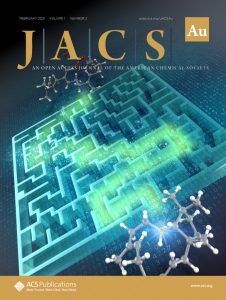A Collaboration Work by Assistant Prof. Hajime Sato and Prof. Masanobu Uchiyama (the University of Tokyo) was selected as a Cover Picture of JACS Au
07/19/2021
Journal: JACS Au(Open Access)
Title: DFT Study on the Biosynthesis of Verrucosane Diterpenoids and Mangicol Sesterterpenoids: Involvement of Secondary-Carbocation-Free Reaction Cascades
Authors: Hajime Sato,* Bi-Xiao Li, Taisei Takagi, Chao Wang, Kazunori Miyamoto, Masanobu Uchiyama*
DOI: 10.1021/jacsau.1c00178
Link:https://pubs.acs.org/doi/abs/10.1021/jacsau.1c00178
Summary of This Work
Natural products, featuring diverse chemical structures and functions, are produced by microorganisms, plants and animals, and have been a main player in drug discovery research. However, since their diverse structures are biosynthesized through complicated and multi-step enzymatic reactions, many of the details and mechanisms still remain in mystery.
In this study, we succeeded to elucidate how the complicated chemical structures of the terpene natural products, verrucosane-type diterpenes and mangicol-type sesterterpenes, are biosynthesized using a theoretical calculation method that they have developed. We also found that there are some common problems in the predicted pathways that have been proposed so far. For example, the predicted biosynthetic pathways for verrucosane-type diterpenes and mangicol-type sesterterpenes contain several secondary carbocation intermediates. In basic organic chemistry research, it has been known that secondary carbocations are one to ten million times more unstable than tertiary carbocations. The present theoretical calculations revealed the existence of a rational biosynthetic pathway in which the formation of secondary carbocations is wisely avoided. Although there are many biosynthetic pathways in which secondary carbocation intermediates have been proposed, this study cautions us to be very careful when proposing secondary carbocations as biosynthetic intermediates. However, in this study, we have warned that we need to be very careful in proposing secondary carbocations as biosynthetic intermediates. This research is worthy as basic academic research in organic chemistry and natural product chemistry, but if such research can lead to the elucidation of the clever "manufacturing" mechanism of natural products, and if it can be utilized for various purposes, it is expected to be a powerful tool for drug discovery research.
The Sato Laboratory is engaged in research to unravel the mysteries of natural products using the three tools; computational chemistry, synthetic organic chemistry, and biochemistry. If you are interested in our research, please visit our HP.
Sato Laboratory HP: https://www.ccn.yamanashi.ac.jp/~hsato/publications.html
